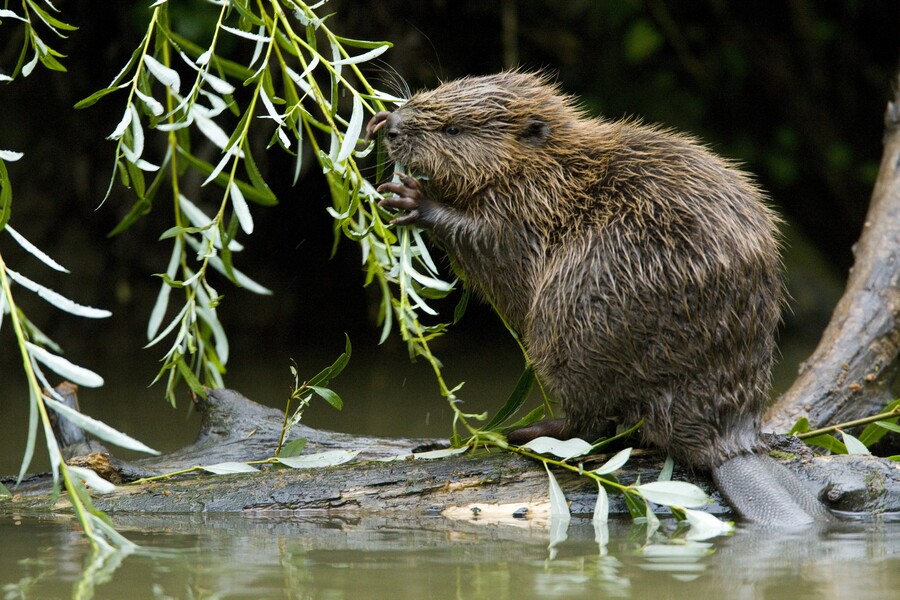Detail: Beaver project near Oberzell
Over 200 beavers in Hesse
In 1987 and 1988 a trial resettlement was started. Eighteen beavers from the river Elbe were successfully introduced to the Sinn and Jossa rivers in Upper Hesse. The beavers spread very fast. To date there are over 200 beavers in Hesse! They have spread mostly along the sides of small rivers in the Hessian and Bavarian low mountain ranges of Spessart. Where beavers occur riverscapes and meadow grounds appear.The beaver lives for the most time in water. Its body length is between 80 and 120 cm. They can weigh up to 30 kilos and live for approximately 20 years. Their large sharp incisors continually re-grow. This is essential as they are needed to cut the trees they use for building material and winter food. The beaver has small front paws but large webbed back feet which they use to paddle. Male and female beavers look very alike and can only be told apart after close inspection.
Thick fur and fat on the belly keeps them warm
Beavers don't hibernate. With approximately 23.000 hairs per square centimetre, the coat of the beaver is especially thick and perfectly insulates their bodies in icy water. Around the belly the fur is twice as thick as it is on the back. Their broad, flat tails, (also called „trowels“ in german) mostly consist of fatty tissue and are covered in scales. They are used as rudders while swimming.Beavers are completely vegetarian. During the growth season between spring and autumn, they feed predominantly on herbal plants of all kinds, especially meadowsweet, but they also like thistles, nettles and reeds. Throughout the winter they are dependent on bark and thin tree branches they have cut during autumn. They stockpile branches close to their burrows so they can get their winter food even in strong frosts by swimming underneath the ice.
Beavers create new biotopes
Where the beaver is busy as a landscape architect, many new habitats that disappeared in our tidy landscapes, have reappeared. They re-naturalise streams and rivers completely for free, where humans would have to invest many thousands of euros for planning and execution. The only thing the beaver needs to do this is enough space and the acceptance from humans. Join us and help us to buy more land for nature! To our current projectMore about the wet fallowMore about the lower mountain stream

